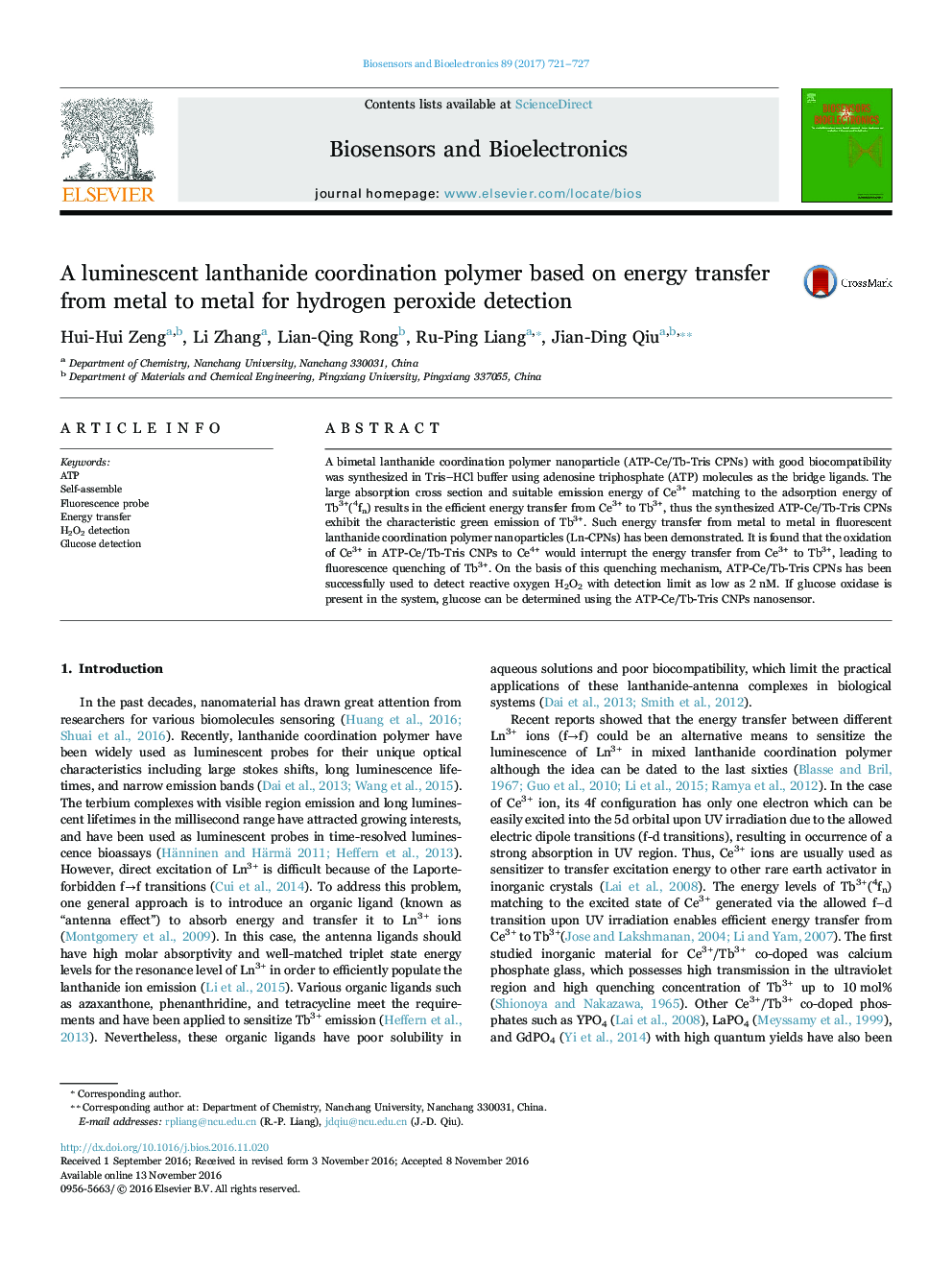| Article ID | Journal | Published Year | Pages | File Type |
|---|---|---|---|---|
| 5031435 | Biosensors and Bioelectronics | 2017 | 7 Pages |
Abstract
A bimetal lanthanide coordination polymer nanoparticle (ATP-Ce/Tb-Tris CPNs) with good biocompatibility was synthesized in Tris-HCl buffer using adenosine triphosphate (ATP) molecules as the bridge ligands. The large absorption cross section and suitable emission energy of Ce3+ matching to the adsorption energy of Tb3+(4fn) results in the efficient energy transfer from Ce3+ to Tb3+, thus the synthesized ATP-Ce/Tb-Tris CPNs exhibit the characteristic green emission of Tb3+. Such energy transfer from metal to metal in fluorescent lanthanide coordination polymer nanoparticles (Ln-CPNs) has been demonstrated. It is found that the oxidation of Ce3+ in ATP-Ce/Tb-Tris CNPs to Ce4+ would interrupt the energy transfer from Ce3+ to Tb3+, leading to fluorescence quenching of Tb3+. On the basis of this quenching mechanism, ATP-Ce/Tb-Tris CPNs has been successfully used to detect reactive oxygen H2O2 with detection limit as low as 2Â nM. If glucose oxidase is present in the system, glucose can be determined using the ATP-Ce/Tb-Tris CNPs nanosensor.
Related Topics
Physical Sciences and Engineering
Chemistry
Analytical Chemistry
Authors
Hui-Hui Zeng, Li Zhang, Lian-Qing Rong, Ru-Ping Liang, Jian-Ding Qiu,
